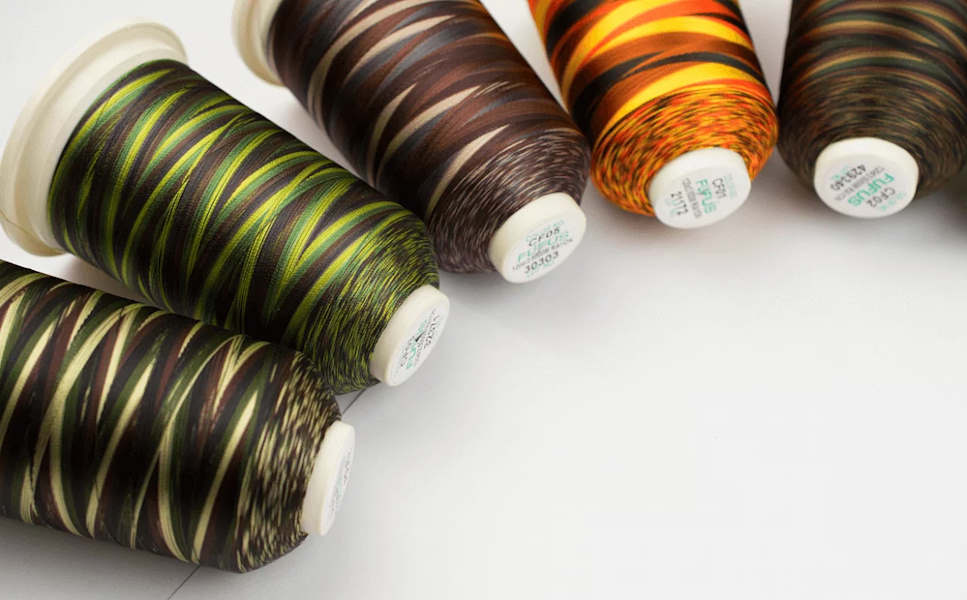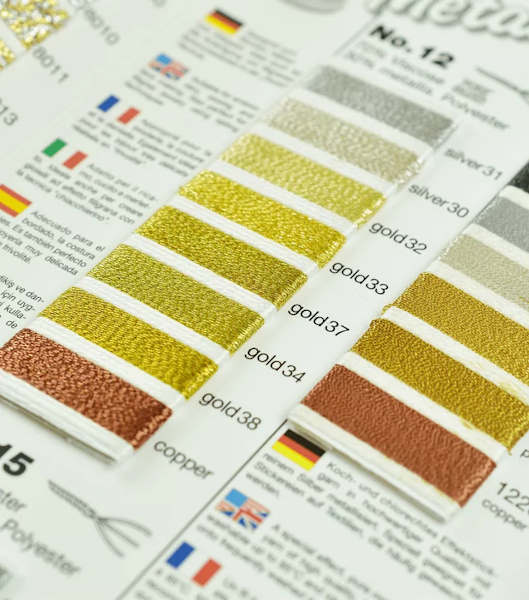The Timeless Elegance of Embroidery: Transforming Everyday Items into Works of Art
Embroidery has a unique way of transforming ordinary items into festive and elegant pieces. A standard blouse adorned with a satin stitch pattern instantly becomes a designer item, while a tablecloth featuring the tatami technique transforms into a work of art. Embroidered textiles, especially those bearing the owner’s monogram, add a touch of exclusivity and uniqueness to any home decor.
Embroidery: A Timeless Trend in Fashion and Decor
Embroidery never goes out of fashion. It remains a favorite decor element for world-renowned couturiers and is a hallmark of the aristocratic taste of skilled needlewomen who embellish textiles with intricate monograms and patterns. With modern embroidery machines, even the most creatively complex designs can be brought to life. However, to ensure that the chosen decor shines in all its glory, selecting the right embroidery threads is crucial.
 Key Factors to Consider When Choosing Embroidery Threads
Key Factors to Consider When Choosing Embroidery Threads
Specialized online stores in cities like St. Petersburg and Moscow offer a vast range of threads for embroidery machines. These threads vary not only in color but also in fiber thickness, composition, and properties. This variety allows craftswomen to create stunning effects, stitch by stitch, turning patterns into true masterpieces.
Strength and Durability
When purchasing embroidery threads, it's essential to consider their strength. These threads must withstand the high speeds of modern embroidery machines. The thread's marking number indicates its thickness—the higher the number, the thinner the thread. Threads with the same marking number but different compositions can look quite different.
Avoiding Common Pitfalls
While it’s possible to use simple cotton threads in modern embroidery machines, professionals advise against it. Embroidery designs made with cotton threads tend to be uneven, and the threads often break, making the embroidery process labor-intensive.
The Importance of Twist
Many embroidery machine manufacturers recommend considering the thread’s twist. Left-twist threads are often preferred. To determine the twist, hold the thread with both hands, keeping your left hand still while twisting it towards you with your right hand. If the thread tightens, it’s left-twisted; if it loosens, it’s right-twisted.
Types of Embroidery Threads
Embroidery threads are categorized based on their composition. The most popular types include:
- Viscose: Soft, artificial threads that prevent loops during embroidery.
- Polyester: Elastic synthetic threads with a shiny surface.
- Metallic Threads: Feature a polyester film with a metallic sheen and a nylon base, though they can be tricky to work with.
- Cotton: Matte-surfaced threads with a limited color range.
- Twist: Multi-colored, double or triple twisted threads.
- Silk: Luxurious but demanding threads often replaced by synthetic alternatives.
- Lavsan and Nylon: Stretchable threads that are not heat-resistant.
Needlewomen can also find specialty threads in stores, such as foil materials, glow-in-the-dark threads, color-changing threads, and thick melange threads.
The Art of Colorful Stitching
The beauty of embroidery largely depends on the quality and properties of the threads. It’s best to trust reputable manufacturers. While the market is flooded with Chinese and Korean products, experts often prefer European manufacturers, with Germany’s Madeira leading the way. Madeira threads are known for their durability, vibrant colors, and hypoallergenic properties.
Storing Embroidery Threads Properly
To maintain their quality, embroidery threads should be stored at temperatures no higher than 25 degrees Celsius and humidity levels between 40-60%. The best storage container is often the one the threads come in. If numerous boxes seem cumbersome, opaque plastic containers are a great alternative.
Embrace Your Creative Imagination
Choosing the right embroidery threads isn’t difficult. By following the recommendations of embroidery machine manufacturers and letting your creative imagination soar, you can achieve stunning results. Embroidery remains a timeless art form, capable of turning everyday items into cherished works of art.
Comments


